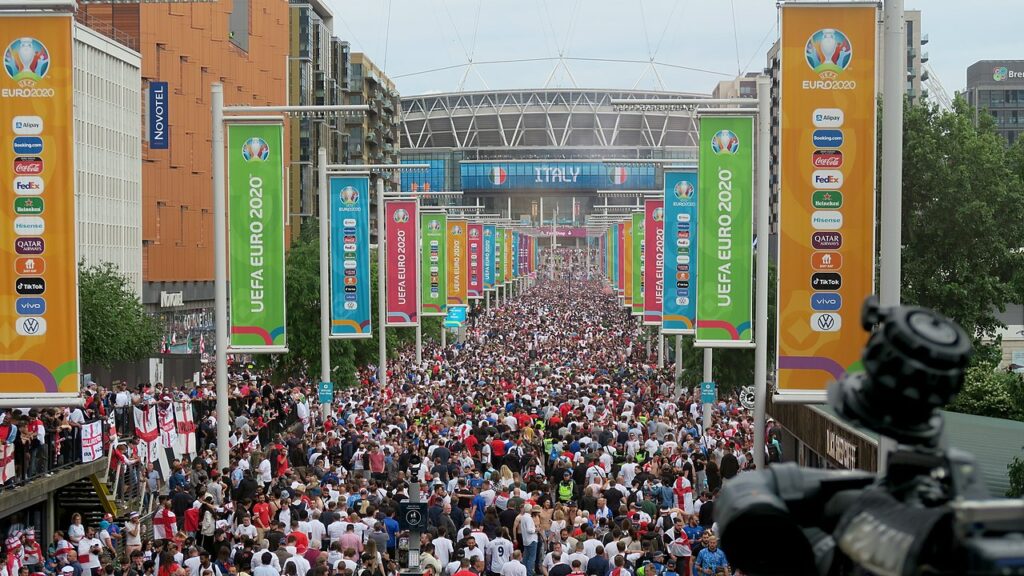Digitalisation in the sports and event sector: What Flensburg and Wembley Stadium have in common.
London, Wembely Stadium. Seating rows with a total length of 54 kilometers. 688 snack and drink outlets. 47 fan shops. 2,618 toilets. 8 restaurants. The population of a large medium-sized German city such as Flensburg regularly moves through this mammoth building to experience a Three Lions international match, an Adele concert or another event live.
Logistical challenges for all involved
In Europe alone there are almost 80 sports stadiums with a capacity of more than 50,000 visitors, and the situation is likely to be similar in all of them for a major event. In most cases, the doors open 90 minutes before the start of the event. There is little time for 50,000+ people to relax and find their way to their booked seats, get a cool drink or stop by the fan shop.
Instead of relaxed anticipation, there is often stress and a hectic pace, which is a reason for quite a few people to avoid such events, even though they would like to visit. At the same time, it is essential for stadium operators to keep the capacity utilization of the events taking place as high as possible in order to operate profitably.
So, what can be done to reduce the negative stress, make the positive fan experience perfect and convince visitors to leave the comfort of their couch at home in favor of an on-site visit? As always, the magic word here is “digitalisation”, which – to put it bluntly – is used to slay any problem these days.
Indoor navigation via smartphone
And the starting point could not be simpler. Many arena operators and football clubs already provide their fans and visitors with iOS and Android smartphone apps that contain all the important information about the club or the venue. A so-called SDK (Software Development Kit) can be integrated into these apps with manageable effort, making indoor navigation via Bluetooth possible. The basis for this is an infrastructure of permanently installed Bluetooth Low Energy Beacons, which form the reference points for turn-by-turn navigation inside the stadium with an accuracy of around 3-5 meters.

